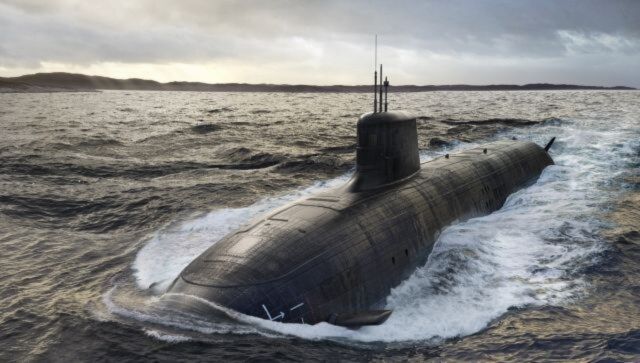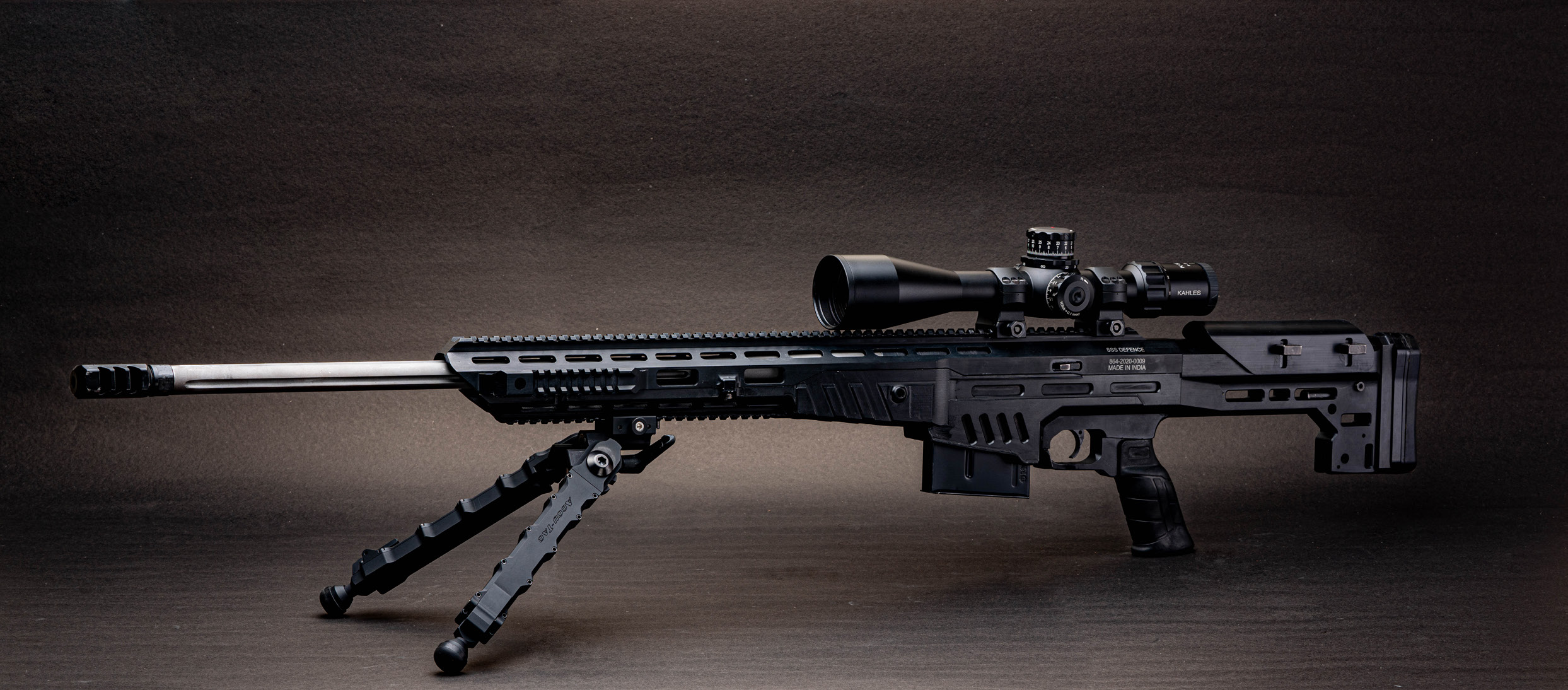SOURCE: AFI


In a significant development for India’s military procurement strategy, there are strong indications that the Indian Air Force (IAF) might reconsider its plans to acquire additional CH-47F(I) Chinook heavy-lift helicopters. This reassessment comes amid pressure from the Trump administration, which has been keen on enhancing defense ties and promoting U.S. defense exports.
In September 2015, India signed a landmark deal with U.S. aerospace giant Boeing to procure 15 CH-47F(I) Chinook helicopters for approximately $1.1 billion. This contract included an option clause allowing India to purchase an additional seven helicopters at the same price point if needed. However, due to cost considerations, the IAF did not exercise this option initially, focusing instead on other strategic acquisitions.
Continue readingSOURCE: AFI


The Indian Navy has officially placed orders for the Kalibr-PL anti-ship cruise missiles to enhance the capabilities of its Kilo-class submarine fleet, signaling a strategic move to bolster its naval strike capabilities. The Kalibr-PL, specifically the 3M-14K variant, is tailored for sub-surface launches, akin to the 3M-14T Kalibr-NK, which is deployed from surface ships but serves a land-attack role.
The Kalibr-PL missiles, with their variant designed for submarine deployment, have been seen in action when launched from improved Kilo-class submarines. This integration into the Indian Navy’s arsenal comes as part of a broader modernization effort, aiming to equip its underwater fleet with state-of-the-art weaponry capable of engaging targets at extended ranges.
Continue readingSOURCE: IDRW.ORG
)

India’s decision to prioritize the development of nuclear-powered attack submarines (SSNs) over acquiring additional aircraft carriers represents a significant shift in naval strategy, according to Dr. Elizabeth Buchanan, Senior Fellow at the Australian Strategic Policy Institute (ASPI). This response follows reports that the Ministry of Defence (MoD) has halted plans for procuring a third aircraft carrier in favor of accelerating the indigenous SSN program.
Dr. Buchanan stated, “India’s decision to throw everything at the SSN program signals a major doctrinal shift.” The move reflects a reassessment of India’s strategic priorities, emphasizing undersea warfare capabilities as a means to counter emerging regional threats and enhance naval deterrence.
Continue readingSOURCE: IDRW.ORG


In a significant stride toward self-reliance in defense technology, Astra Microwave Products Limited (AMPL), a Hyderabad-based leader in RF and microwave systems, has showcased its indigenously developed S-Band Active Antenna Array Unit (AAAU) Radiating Plate Assembly (RPA).
This cutting-edge system, realized in collaboration with the Electronics and Radar Development Establishment (LRDE), a laboratory under the Defence Research and Development Organisation (DRDO), represents a milestone in India’s radar technology development. The AAAU was demonstrated at AMPL’s state-of-the-art Radar Research and Development (R&D) facility in Bengaluru, where it underwent rigorous testing and validation, highlighting India’s growing capabilities in advanced defense electronics.
Continue readingSOURCE: AFI


The Defence Research and Development Organisation (DRDO) has announced that its Very Short-Range Air Defence System (VSHORADS) is now set for Army user trials, with the Indian Air Force (IAF) also participating, after three successful flight trials conducted off the coast of Odisha. These trials, which took place in Chandipur, demonstrated the system’s capability against high-speed, low-altitude threats, marking a significant step forward in India’s defense capabilities.
The trials involved engaging high-speed targets simulating enemy aircraft or drones flying at very low altitudes, a scenario where air defense systems are often put to the test. The VSHORADS successfully intercepted these targets, proving its effectiveness in real-world combat conditions.
Continue readingSOURCE: AFI


The Pakistan Air Force (PAF) is at a critical juncture, dealing with what could be described as a ticking time bomb regarding its aging fleet of fighter jets. With significant portions of its combat aircraft nearing or exceeding their operational life expectancy, the PAF is under immense pressure to phase out these aging assets while simultaneously modernizing its air capabilities to keep pace with regional threats and technological advancements.
Mirage III/V Dates back to the 1960s and 1970s, the PAF still operates over 150 Mirage-III/5 jets. These French-origin aircraft, now over 50 years old, are rapidly approaching the end of their airframe service life. The manufacturer, Dassault, ceased production of spare parts decades ago, severely limiting maintenance and operational capabilities.
Continue readingSOURCE: AFI


A viral video circulating on Instagram has sparked significant interest in the defense community, showcasing a new armoured BEML Tatra 6×6 truck. Bharat Earth Movers Limited (BEML), a leading Indian defense manufacturer, is reportedly developing this advanced vehicle, which features a newly designed 4-door armoured cabin for a 6×6 Mounted Gun System (MGS). This development is set to enhance the operational capabilities of the Indian armed forces, particularly in high-mobility and combat scenarios.
The new armoured truck is built on the existing BEML-Tatra 6×6 High Mobility Vehicle (HMV) chassis, renowned for its ruggedness and adaptability across diverse terrains. The 6×6 configuration ensures superior off-road performance, making it ideal for military applications in challenging environments.
Continue readingSOURCE: AFI


In a remarkable showcase of indigenous defense technology, an India-made sniper rifle has reportedly outperformed the iconic American Barrett in a high-profile competition. The National Security Guard (NSG), India’s elite counter-terrorism force, clinched victory in the All India Police Commando Competition using the .338 Saber, a sniper rifle designed and manufactured by Bengaluru-based SSS Defence. This triumph has spotlighted India’s growing prowess in the global arms manufacturing arena.
The competition, which pits some of India’s finest commando units against one another, saw the NSG take on formidable opponents, including Force One of the Maharashtra Police. Force One, equipped with the American-made Barrett .50 Cal—a sniper rifle widely regarded as one of the best in the world—secured second place. Despite the Barrett’s reputation for power and precision, the .338 Saber proved superior in this contest, underscoring the capabilities of India’s homegrown technology.
Continue readingSOURCE: AFI


Tata Power Company Limited, a leading name in India’s energy sector, has taken a significant step towards diversifying its energy portfolio by shortlisting six potential locations for nuclear power projects. This move comes as part of the company’s strategic expansion into the nuclear energy sector, which is seen as a cornerstone for sustainable and clean energy solutions in India.
According to Praveer Sinha, CEO and MD of Tata Power, the company has rigorously evaluated over 10 sites across the nation. After careful assessment, six of these have been selected as viable options for establishing nuclear power plants. This decision aligns with the broader national objective of enhancing energy security through nuclear power, which offers benefits like reduced carbon emissions and a reliable power supply.
Continue readingSOURCE: RAUNAK KUNDE / NEWS BEAT / IDRW.ORG


Following the successful unveiling of the CATS Warrior Loyal Wingman, Hindustan Aeronautics Limited (HAL) has now set its sights on the development of another critical component of India’s Combat Air Teaming System (CATS) — the CATS Hunter Air Launched Cruise Missile (ALCM). This new project draws inspiration from the SCALP ALCM, utilized by the Ukrainian fighter jets, notably in the ongoing Ukraine-Russia conflict.
SCALP ALCM, a long-range, air-launched cruise missile, has proven effective in real combat scenarios. However, its use has been restricted to the Rafale fleet, limiting its widespread adoption within the Indian Air Force (IAF). The CATS Hunter aims to change this by offering similar capabilities but with broader compatibility across various fighter jet platforms in the IAF’s inventory.
Continue readingSOURCE: RAUNAK KUNDE / NEWS BEAT / IDRW.ORG


Tonbo Imaging Pvt Ltd, a leading Indian company specializing in advanced imaging and sensor technology, has joined hands with the Indian Navy to develop an innovative See-Through Armour System equipped with multi-spectral HD sensors. This system, designed for various naval applications, aims to significantly enhance the situational awareness of ships and submarines during their operations at sea, anchorage, and while navigating through potential threats.
The collaboration is expected to provide critical advancements in passive situational awareness—a key aspect of modern naval operations—by utilizing advanced sensor technology to offer a 360-degree view of the environment around the vehicle. This technology will be crucial for improving threat detection, enabling naval platforms to detect and respond to threats more effectively, and improving mission success while minimizing vulnerabilities.
Continue readingSOURCE: RAUNAK KUNDE / NEWS BEAT / IDRW.ORG


The Aeronautical Development Agency (ADA) has made a groundbreaking announcement that the upcoming RSPA (Remotely Piloted Stealth Aircraft) Unmanned Combat Aerial Vehicle (UCAV) will be equipped with an Electro-Optical Targeting System (EOTS) developed for the Advanced Medium Combat Aircraft (AMCA) program. This integration of EOTS on a stealthy UCAV marks a significant leap in military aviation technology and might very well be the first of its kind globally.
The AMCA program, a cutting-edge initiative by India’s Defence Research and Development Organisation (DRDO), aims to deliver a fifth-generation fighter aircraft with stealth capabilities, supercruise, advanced avionics, and cutting-edge weaponry. Integral to this next-generation platform is the EOTS, a sophisticated sensor system designed to provide superior targeting and surveillance capabilities. It uses infrared and optical sensors to deliver high-resolution imagery for targeting, navigation, and tracking in all weather conditions.
Continue readingSOURCE: AFI


China has recently constructed a new Large Phased Array Radar (LPAR) site in Yunnan Province, near its border with Myanmar, signaling a significant enhancement to its ballistic missile early warning capabilities. This advanced radar system, reportedly boasting a range of approximately 5,000 kilometers, is poised to extend China’s surveillance reach across the Indian Ocean Region (IOR) and deep into Indian territory. The development has raised eyebrows in New Delhi, as the radar’s primary function appears to include tracking Indian ballistic missile tests—an escalation in the ongoing strategic rivalry between the two Asian powers.
The LPAR, a sophisticated ballistic missile early warning radar, represents a cornerstone of China’s expanding defense architecture. Designed to detect and monitor missile launches at vast distances, the Yunnan site’s 5,000-kilometer range covers not only the IOR but also much of South and Southeast Asia, including the entirety of India. This capability positions China to closely observe India’s missile development program, particularly tests conducted from facilities like the Dr. A.P.J. Abdul Kalam Island off India’s eastern coast, where ballistic missiles such as the Agni-V and K-4 are routinely launched.
Continue readingSOURCE: AFI

The Indian Air Force (IAF) has long sought to modernize its fighter fleet, with a mix of Western and Russian platforms defining its combat capabilities. However, history may be repeating itself as the Rafale, the highly capable 4.5-generation fighter from France’s Dassault Aviation, might end up facing the same fate as the Mirage-2000—a potent but limited-in-number platform that was initially procured with plans for further indigenous production, only to be sidelined in favor of cheaper alternatives.
India acquired the Mirage-2000 in the 1980s after evaluating various Western and Soviet fighter jets. The initial batch of 40 aircraft proved to be a game-changer, offering superior air-to-air and air-to-ground capabilities. The original plan was to procure more units and eventually produce them in India. However, instead of expanding the Mirage fleet, the Indian government opted for the more cost-effective MiG-29A from the Soviet Union, leading to the Mirage-2000 remaining a niche platform in the IAF. Over the decades, this limited fleet size became a challenge, especially as the aircraft aged and required expensive upgrades.
Continue readingSOURCE: AFI

ideaForge Technology Limited, India’s leading drone manufacturer, is set to captivate the aerospace community at Aero India 2025 with the launch of their latest innovation, the SWITCH V2. This new iteration of the SWITCH UAV series promises unparalleled performance, making it an all-terrain dominator in the unmanned aerial vehicle (UAV) market.
With an operational range expanded to 20 kilometers, SWITCH V2 significantly exceeds its predecessor’s capabilities, allowing for broader surveillance and operational scope. The UAV now boasts a flight time of 150 minutes, a substantial increase that supports prolonged missions, whether for military, homeland security, or industrial applications.
Continue reading